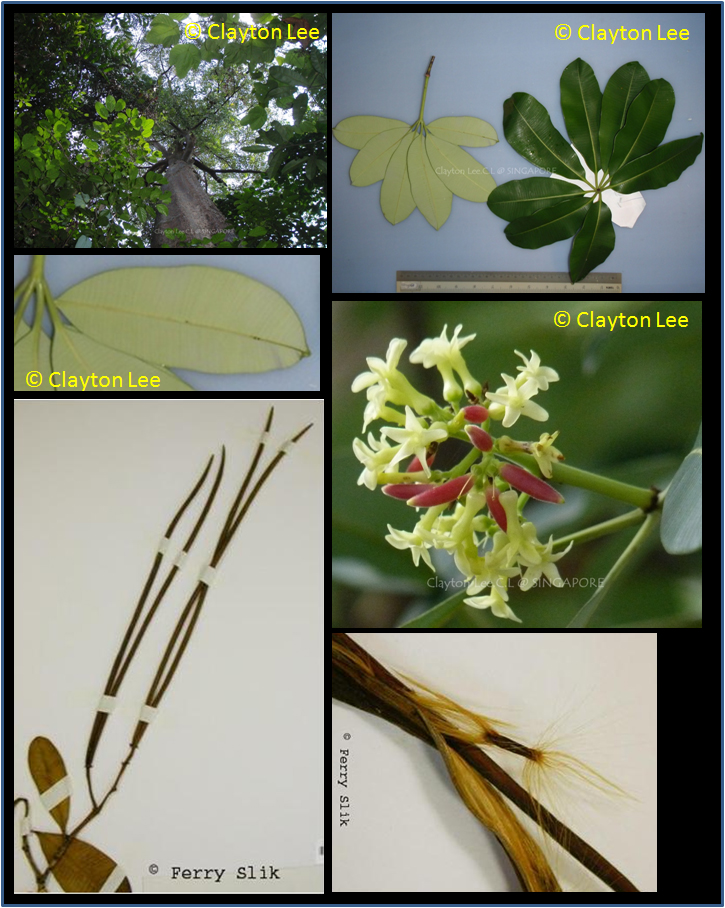Alstonia angustiloba Miq., Fl. Ind. Bat. 2 (1856)
(Latin for 'with small lobes')Synonyms
Alstonia angustiloba var. glabra Koord. & Valeton.
Alstonia calophylla Miq.
Paladelpha angustiloba (Miq.) Pichon
Diagnostics
Tree with abundant white sap. Leaves in whorls, lower surface whitish, secondary veins placed close
together at perpendicular angle to the midvein. Very similar to Alstonia scholaris, but
missing the ligule at the base of the petioles. Flowers with corolla tubes up to about twice as long
as corolla lobes (as oppose to longer for Alstonia iwahigensis). Fruits very long and narrow,
greenish, hairy (as opposed to glabrous in Alstonia iwahigensis, placed in pairs; splitting
open to expose many small seeds with two tufts of hairs for wind dispersal.
Description
A medium-sized to large tree up to 45 m tall, bole tall, straight, fluted, up to 100 cm in diameter,
buttresses straight, up to 8 m tall and spreading out at the base for about 1.5 m, outer bark brown
or grey to whitish, rough, fissured and peeling off in rectangular flakes, inner bark mottled,
yellow-brown, with copious latex; leaves in whorls of 4-7(-9), elliptical to obovate, 4.5-22 cm x 2-7 cm,
subacuminate or obtuse, with 30-60(-70) pairs of secondary veins, petiole 10-20(-30) mm long;
inflorescence usually forming 2 umbels above each other, many-flowered, pedicel 1-3 mm long,
calyx hirtellous, corolla glabrous outside; follicles brownish tomentose, with many small hairy,
wind dispersed seeds. [from PROSEA]
Ecology
Occurs on a wide variety of soils and is common in mixed dipterocarp forest on low hills and
undulating land, and in freshwater swamp forest, up to 800 m altitude. It becomes abundant in
secondary forest and is apparently a fast-growing light demander.
Uses
In Peninsular Malaysia, the leaves are externally applied to the spleen area to treat remittent fever.
In Sarawak, the latex is used to heal boils and abscesses. An extract of the pounded bark is an ingredient
of febrifuges and vermifuges. In Thailand, the latex is used to soothe toothache. The wood is used as pulai.
The latex is used against shingles, boils, abcesses, and ring worm. Also used as an ingredient for chewing gum.
Distribution
Thailand, Peninsular Malaysia, Sumatra, Java, Borneo and the Philippines.
Local names
Borneo: Gite; Hanju latung; Pantung; Pelai; Pulai; Pulai bukit; Pulai lilin; Pulantan bubur; Tombailik.
Brunei: pulai lilin (Malay).
Indonesia: pulai hitam.
Malaysia: pulai (Peninsular), pulai bukit (Sarawak).
Thailand: tin pet lek (Songkhla).
